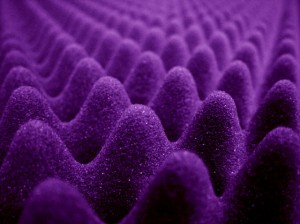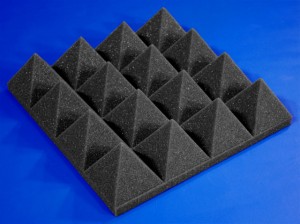When researching a product, its quality, functionality, and affordability are often the biggest factors in the purchase process. However, the single most important, yet often overlooked area is safety. Regardless of how well it measures up in other areas, a product isn’t worth the investment if it isn’t safe. Product safety is taken seriously at Foam Factory, Inc. and is why all the acoustic foam we manufacture and sell meets the ASTM E84 flame retardancy test at its highest Class A rating.

This standard, created by the American Society for Testing and Materials, formally known as ASTM International, evaluates the flame and smoke production of materials after being exposed to a source of fire. These are important factors, as they let a customer know if a product has the potential to create dynamic, life-threatening damage when exposed to flames or other ignition sources, compared to moderately withstanding ignition so that an attempt at extinguishment may be made. Every material is measured against two controls, one being fiber-reinforced cement board, which does not burn or smoke, and red oak flooring, which is the standard measure of a high flammability level.
The results are categorized in two areas; Flame Spread Index (FSI) and Smoke Developed Index (SDI), which rate how far flames spread on the test material and how much smoke is generated. FSI is measured on a scale of 0 to 200, from no flames, to large, quickly spreading flames. SDI is measured on a scale of 0 to 450, from producing no smoke, to thick, heavy smoke. And while these measurements are recorded in a controlled environment that cannot fully replicate the reaction of materials in a real-world setting, the standardization allows similar materials to be compared to determine the best product for an application.
These figures are compiled and translated into a three-tiered class system: Class A, Class B, and Class C, also known as Class 1, 2, and 3 in similar coding systems. Class A rated materials produce the least amount of flames (or none at all) and score 0 to 25 for FSI values, while Class C produces the greatest amount of flames, with FSI values of 76 to 200. Class B produces moderate flames with values of 26 to 75 for FSI, and all three classes must stay under 450 SDI for generated smoke. Many building codes use the ASTM E84 standard as a construction benchmark, though it is important to always ensure your installation will satisfy local building regulations before beginning any work or installation.

Foam Factory’s line of Class A custom soundproofing foam products include eggcrate, wedge, and pyramid foam, corner bass absorbers, broadband absorbers, wall tiles, drop ceiling tiles, rectangular corner blocks, cubed blocks, studio columns, and monitor isolation wedges. Available in 12 vibrant colors, this acoustical foam can also be applied to a variety of other custom projects where fire retardancy is desired, such as in packaging or cushions. Foam Factory products have their fire retardants added to the formula of the foam while it is being manufactured, unlike products with fire treatment simply sprayed on the surface after being manufactured.
Foam Factory’s acoustic foam also performs favorably when measured against competing products. In a 2004 test, Auralex 2-inch Studiofoam, a comparable sound treatment material to Foam Factory’s 2-inch wedge foam, earned a 35 FSI rating and a 350 SDI rating, registering an overall Class B rating. Foam Factory’s 2010 evaluation of their product registered a 25 FSI and 250 SDI, for a Class A rating.
Even with today’s constant advances in technology and standards, there is no completely fireproof or fire retardant foam product, so it is important to use materials in a way that respects this fact. Flames should never be lit or left burning near acoustical foam or sound insulation, smoking should be avoided, and areas housing devices that produce extreme heat should not host open foam installations. When planning an acoustical foam project, always consult with construction and acoustical experts to select the smartest and safest way of achieving your goal.
Always consult local fire and safety authorities and receive approval before installing any foam products.


hello my name is Justin i have question about your fire retardant foam was wondering if you can answer some of my qiestions about your product when it comes to pricing and if reaches astm e84 requirments the dimesnions i need covered is for 2x24x72 standard foam that needs to reach those standards 3-6lbs and i need pricing for as much information as your able to give
Our acoustic polyurethane foam products and acosutic / color sheets have been tested to ASTM-E84. Links to those products are below:
Acoustic Foam Products
Acoustic-Color Foam Sheets